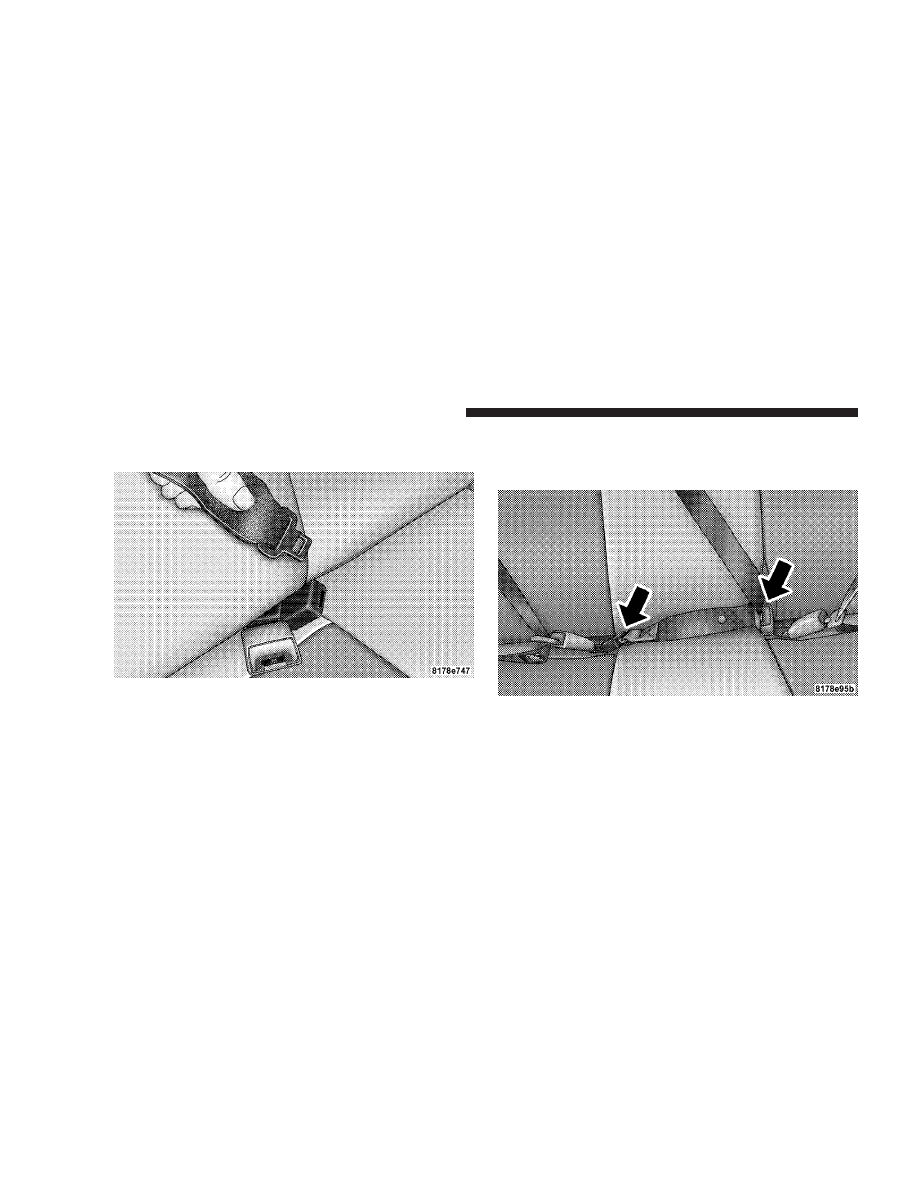Dodge Caliber SRT (2009 year). Manual - part 3

6. When the belt is long enough to fit, insert the latch
plate into the buckle until you hear a “click.”
7. Position the lap belt across your thighs, below your
abdomen. To remove slack in the lap belt portion, pull up
on the shoulder belt. To loosen the lap belt if it is too tight,
pull on the lap belt. A snug belt reduces the risk of sliding
under the belt in a collision.
8. Position the shoulder belt on your chest so that it is
comfortable and not resting on your neck. The retractor
will withdraw any slack in the belt.
Connecting Mini-Latch to Buckle
Rear Center Seat Belt Buckled
44
THINGS TO KNOW BEFORE STARTING YOUR VEHICLE